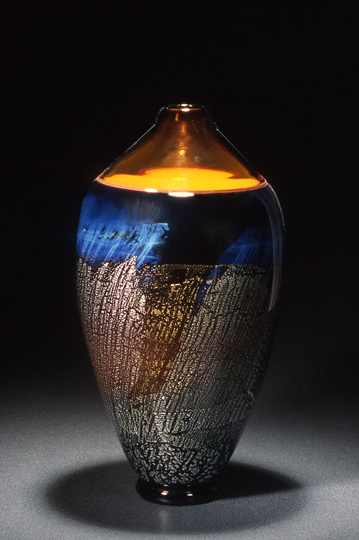
Nightscape Vase
“You know what’s amazing?” says Michael Mortara. “Everybody’s got a drinking cup, but maybe only one out of a thousand, or maybe it’s only one out of 10,000, has seen it being made. You’ve got glass blowing, woodworking and ceramics, the three fundamentals of functional craft, and it’s shocking how many people have never seen it done. We certainly all depend on these things.
“We decided because so few people have seen it done, it was a really easy thing to do to share it by opening up our studio.”
He built the glass blowing studio and gallery where he and his wife Misato Mortara, both artists and glass blowers, work in Volcano Village.
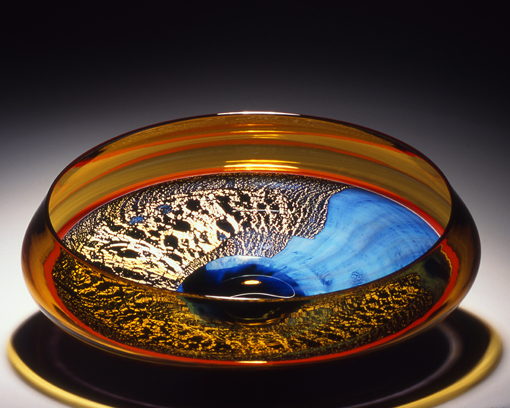
Nightscape Bowl
They chose beautiful Volcano, site of some other seriously molten glass materials, partly because Michael had spent a lot of time there as a child. “We would stay up at my uncle’s place on Wright Road,” he says, “and I really liked it.
“Also, my uncle had a fireplace, and I loved fires. Glass blowing; playing with fire. I was always fascinated with fire when I was a little kid.”
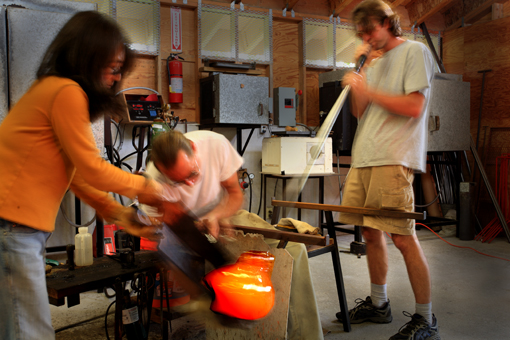
The Team: Misato, Michael and Evan
He talks about the power of fire. “When you have fire, you’ve got heat, you can survive in the cold, you can cook your food. It gives you a certain amount of independence from nature. If you know how to make fire you’re halfway there. It’s a real primal kind of human thing.”
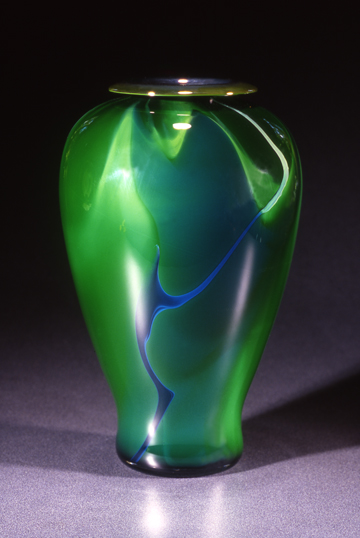
Rainforest Series
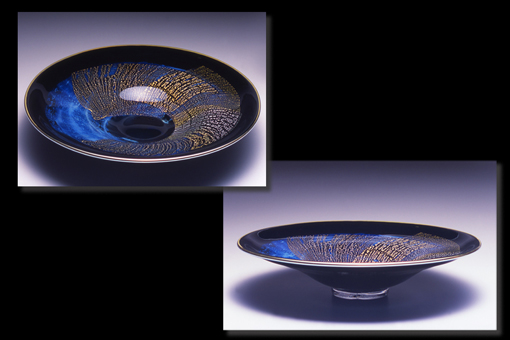
Nightscape Platter
Michael first got involved with glass blowing when he was a high school student at Punahou School in Honolulu, and Misato at the University of Hawai‘i at Manoa, where she too was learning about glass blowing and where the two met.
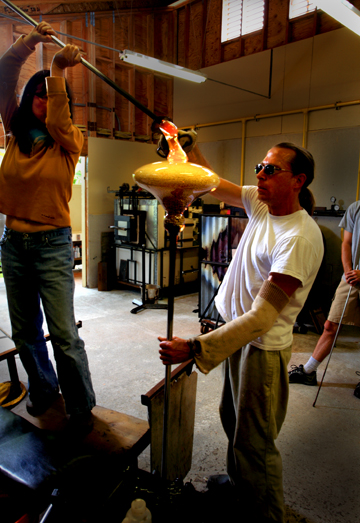
Misato, Michael
Many years ago, when both Michael and Misato had jobs come to an end, they consciously made the decision to start blowing glass professionally. “We thought about, ‘What did we want to do next?’” he says. “It’s like your destiny. Who do you want to be in control of your destiny?”
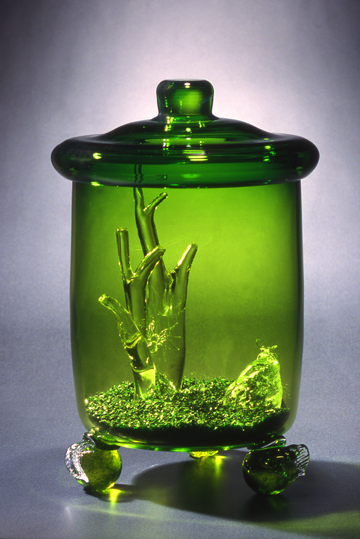
Habitat Series
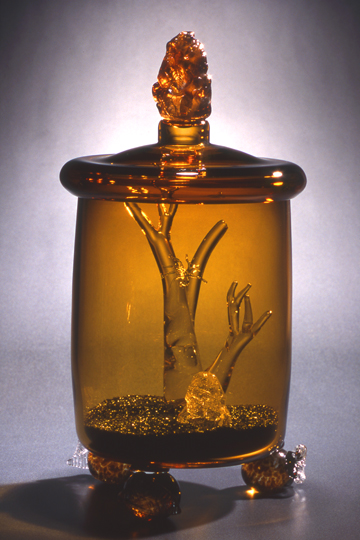
Habitat Series
Artists have been blowing glass since Roman times.
“I think people are impressed because when they think about a craftsperson, or an artist,” says Michael, “they think about someone sitting by themselves in a studio creating their art. But at our studio they see a team of people working together and creating their work. You can have this extremely well-coordinated group of people that doesn’t say a lot to each other, but everyone knows their job and works together very well.”
“It’s the drama of taking a liquid and turning it into a solid,” he says. “The choreography of a team working together to produce a product.”
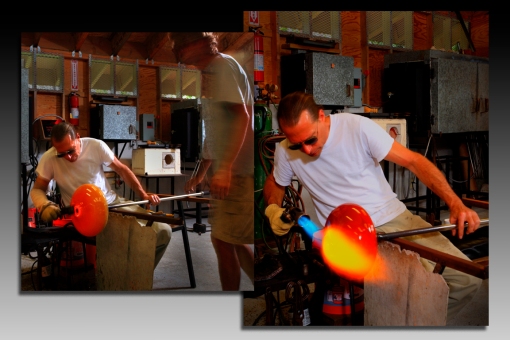
Michael and Evan Working
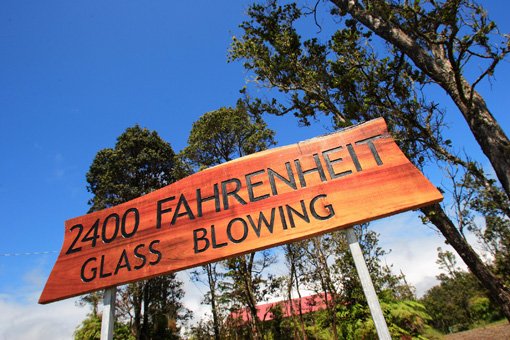
Photo: Courtesy 2400 FAHRENHEIT
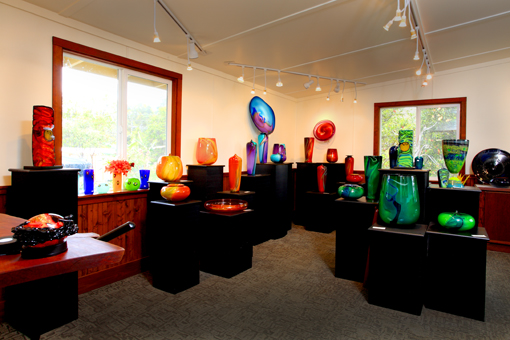
The Gallery at 2400 Fahrenheit
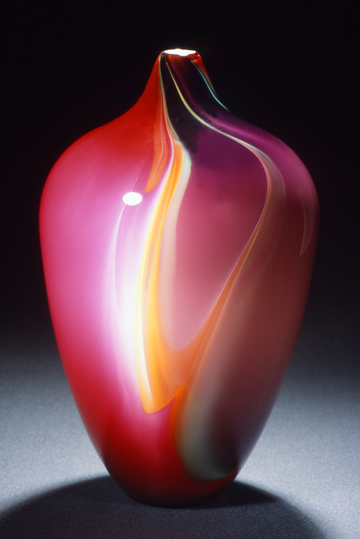
Mirage Series
He and Misato each have exhibits coming up at Hilo’s Wailoa Center in May; his work as part of a show upstairs, and hers as part of one downstairs. “I’m working on some new pieces for it,” he says. “It’s not something you’d see at our studio. I’m building a house right now, and so I’m doing something for the show with nails and wood and glass.”
“The show will be a departure for both of us.”
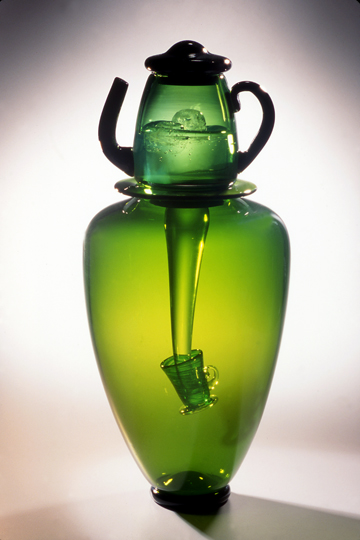
Supercooled Liquid
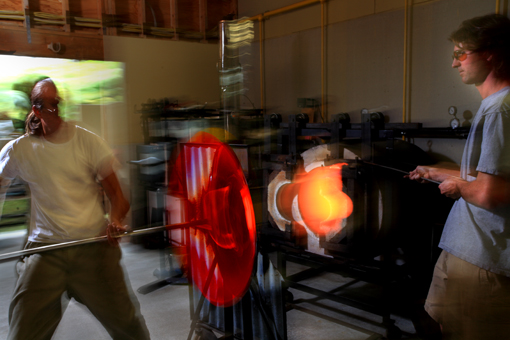
Michael and Evan: The Spinning Stage
He says their work continues to evolve and change. “Personally, I’m working in a much larger, more sculptural aspect now. It’s larger, more expensive, all solid, cut and polished; much more labor intensive and introspective.”
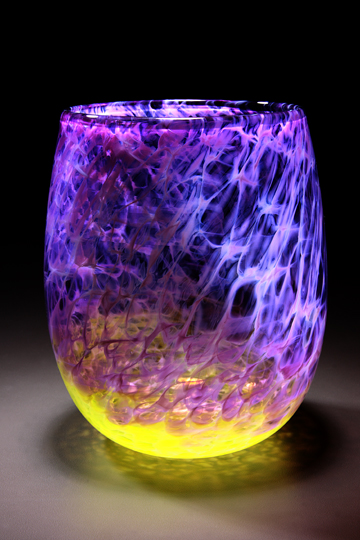
Hulu Series
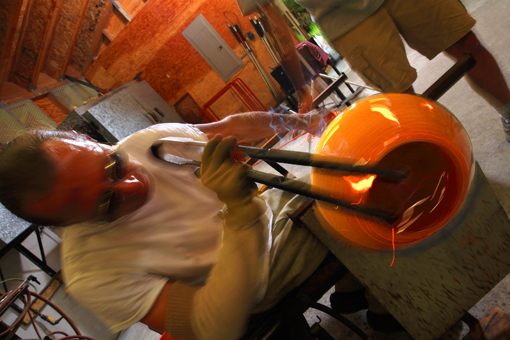
Michael Opening A Platter
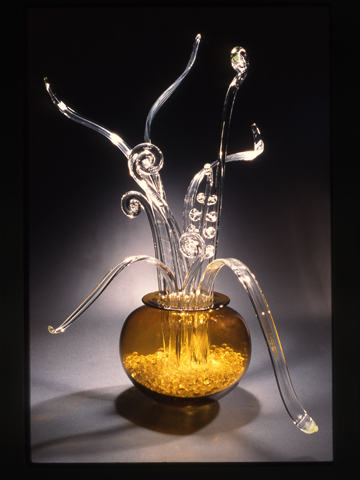
Arrangement From The Rainforest
Macario on the Mortaras:
Glass blowing is a pretty intense process, and it takes a long time to get good at it. The team at 2400 Fahrenheit is really good at what they do. There’s just a lot of talent there.
They have been doing this for a long, long time and their art is at a really high level. You can tell by picking up a piece. You can tell by the feel of it and the weight. The walls are thin, but it’s balanced. It’s pretty fabulous stuff, actually.
They work hard at it, and then they come back the next day and they work hard at it again. And they’ve done that since they started.
When people are there, there’s conversation and communication and you can just tell that they really love what they do. I noticed that Michael really loves showing kids how to make glass. While I was there photographing, they had just finished a piece and were taking a break. These people came in that had been in earlier and were trying to catch them blowing glass.
Michael said, “Oh, you came back. You know what I’ll do? I’ll make a bubble.” He got just enough glass so he could show those kids how to make a bubble.
Misato’s quiet, so you don’t always know how much she contributes, but when you see her pieces they’re quite complicated. Michael told me one time, “Misato’s always got to make stuff hard; challenging.” She’s the one that does all these swirly things with the glass.
They actually make a terrarium, and they make the trees in the terrariums and the spiders and the bugs. It’s just as precise as you can get. You know they’ve spent quite a bit of time figuring that stuff out.
Evan Jenkins is also part of the team. A glass blower in his own right, he’s been with the Mortaras since they started 2400 Fahrenheit. The three of them work together seamlessly.
Those guys are like worker bees. They don’t spout about art, they just DO art. They don’t talk too much about what they do. I mean, they’ll talk with people about the process, how to get this effect or that effect, but they don’t have to talk about their art. People see it.
I have a whole lot of respect for people that are dedicated to their art and what they do. Michael and Misato hold a really high standard. You can see it.
______________________________________________
Michael Mortara: “We’re blowing glass in a way that’s been done for 500-600 years. We’ve got computers for the ovens, and electricity, but to tell you the truth, if you were a glass blower in the Renaissance time, you could come into our studio and do your thing. You would pick up a blowtorch, you’d know how to get glass out of the furnace, and you’d know the tools. It’s essentially unchanged.” PAU
